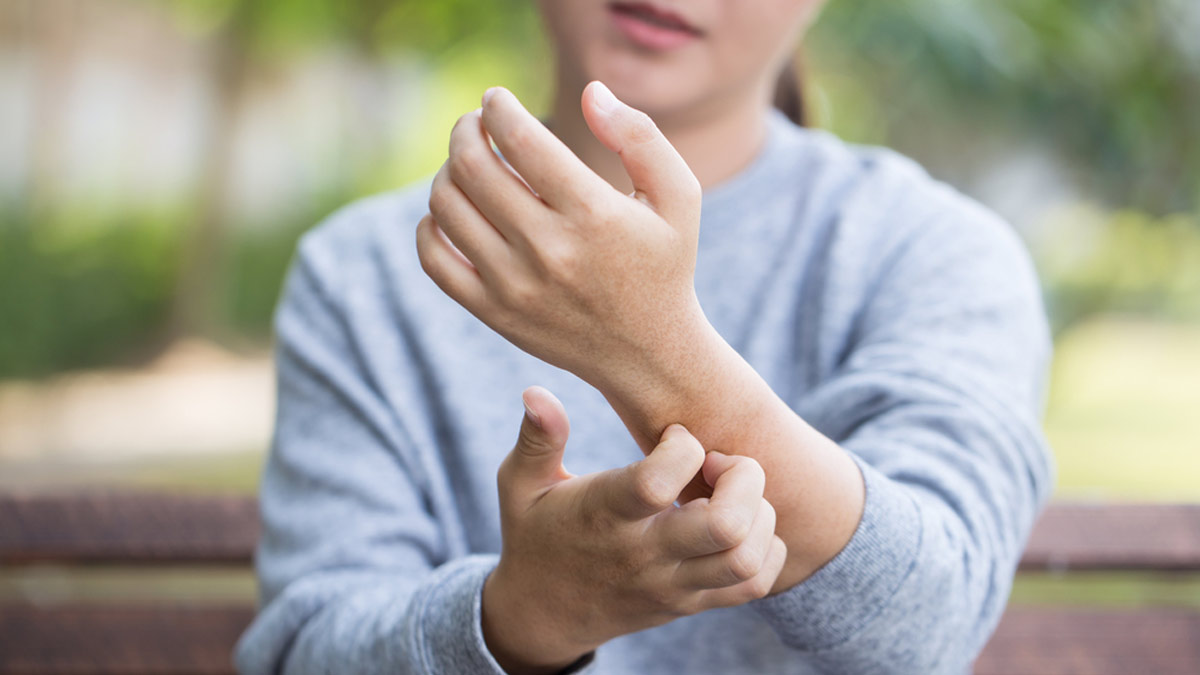
With the change in season, many people develop changes in their skin, such as winter rash. It could be caused due to various reasons, such as dry skin or hot showers. These skin irritations can be uncomfortable and may disrupt your daily activities. In this article, we list the causes of winter rashes and home remedies to provide relief.
Table of Content:-
Causes of Winter Rashes
According to the Skin and Hair Academy, a winter rash is a dry, irritated, and itchy patch of skin brought on by the cold weather. The rash may last all winter long if left untreated. Some of its symptoms include redness, swelling, blisters, and bumps.

Dry Skin
Winter often brings low humidity, and the cold air can strip the skin of its natural moisture. This leads to dry skin, a common trigger for winter rashes.
Cold Urticaria
Some people experience an allergic reaction to cold temperatures, known as cold urticaria. This condition can result in itchy hives or red welts upon exposure to cold air.
Contact Dermatitis
Winter clothing made of irritating fabrics or exposure to certain chemicals in skincare products can lead to contact dermatitis, causing redness, itching, and inflammation.

Eczema (Dermatitis)
People with eczema may find their symptoms aggravated during winter due to dry air. This chronic skin condition can cause red, itchy rashes.
Hot Showers
While a hot shower may be tempting in cold weather, it can strip the skin of its natural oils, leading to dryness and irritation.
Also Read: Skin Rash Or Eczema? Expert Helps You Find Out The Difference
Home Remedies for Winter Rashes

Stay Hydrated
You can combat dry skin by staying well-hydrated. Hence, drink plenty of water to nourish your skin from the inside out. Click here to check if drinking water can make your skin glow.
Moisturise Regularly
You should use a rich and emollient moisturiser to keep your skin hydrated in winter. Make sure that you apply moisturiser right after taking a shower to seal in moisture. You can even apply natural oils like coconut oil, almond oil, or olive oil to moisturise your skin. These oils provide deep hydration and can be used as leave-on treatments.

Choose Appropriate Clothing
Don’t forget to choose breathable fabrics like cotton and avoid materials that may irritate the skin. You can protect yourself from cold temperatures by wearing layers and covering exposed skin. This can prevent cold urticaria and reduce the risk of rashes.
Avoid Hot Showers
While a warm shower is comforting, hot water can strip your skin of essential oils. Therefore, opt for lukewarm water and limit shower time.

Oatmeal Baths
You can soothe your irritated skin by taking oatmeal baths. Add colloidal oatmeal to your bath water to relieve itching and inflammation.
Also Read: Pamper Your Skin: DIY Oatmeal Face Packs For Promoting Skin Health
Humidify Your Home
You can use a humidifier in your home to combat the dry air. Keeping the air moist prevents excessive evaporation of water from the skin. Thus, the skin becomes hydrated and less likely to feel dry and irritated.
Avoid Harsh Skincare Products
Make sure your skincare products are gentle and fragrance-free to prevent irritation. This is because harsh chemicals can exacerbate winter rashes.

Aloe Vera Gel
Aloe vera contains soothing properties that help reduce inflammation and itching. All you need to do is apply fresh aloe vera gel to the affected areas.
Bottomline
While home remedies can provide relief for many, it's essential to consult a dermatologist if your winter rash persists or worsens. Some conditions may require medical intervention, and a healthcare professional can offer personalised advice based on the specific nature of your rash.
Also watch this video
Read Next
Black Pepper Benefits: Here's How This Spice Can Benefit Your Skin, Hair, And Overall Health
How we keep this article up to date:
We work with experts and keep a close eye on the latest in health and wellness. Whenever there is a new research or helpful information, we update our articles with accurate and useful advice.
Current Version